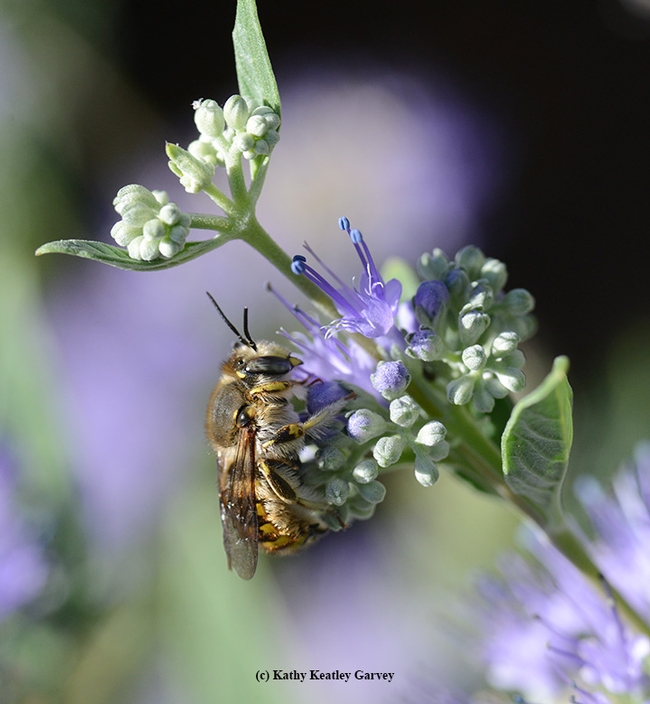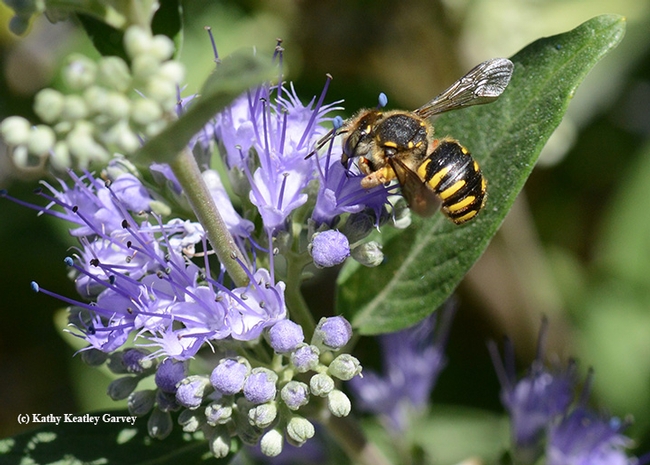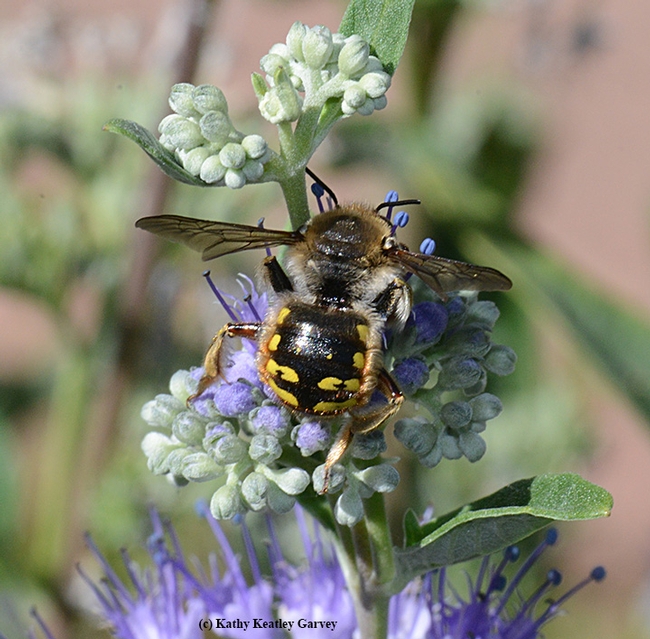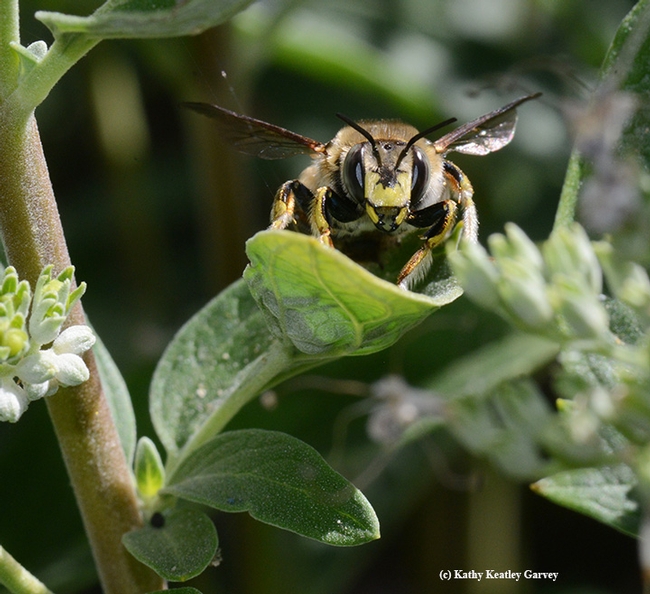Do they ever slow down?
Not much.
The male European wool carder bee (Anthidium manicatum), a yellow and black bee about the size of a honey bee, spends most of the day defending its "property" (food) from other visitors. It's so territorial that it will dive-bomb and/or bodyslam visitors such as honey bees, butterflies, sweat bees, carpenter bees, bumble bees and praying mantids that dare land on or occupy "their" plant. We've seen them do this on catmint, blanket flower, Mexican sunflower, foxgloves and bluebeard.
If you're a floral visitor, it's no fun trying to sip some nectar while trying to dodge a yellow-and-black bullet. And if you don't move, you're likely to get hit. Unexpectedly.
Early morning, however, is a perfect time to photograph the male carder bees. They're often resting on a blossom, warming their flight muscles, or sipping a little nectar.
The bees, so named because the females collect or "card" leaf fuzz for their nests, were introduced in New York in 1963, and then began spreading west. They were first recorded in California (Sunnyvale) in 2007.
"Males are considerably larger than females, and have a spine on either side of the last two abdominal segments and three spines on the last segment," says Lynn Kimsey, director of the Bohart Museum of Entomology and a professor of entomology at UC Davis. Those spines have been mistaken for stingers, but only females have stingers.
The female wool carder bees build their nests in rotting wood or preexisting tunnels, such as beetle burrows, Kimsey says. At night, we've seen the males sleeping in the bee condos (drilled blocks of wood) meant as homes for blue orchard bees.
A little R&R before D&B (dive-bombing and body-slamming).
(Note: Check out the Anthidium manicatum research in Pan-Pacific Entomologist, the work of entomologist Tom Zavortink, associate at the Bohart Museum of Entomology, UC Davis, and entomologist Sandra Shanks, formerly of Davis and now Port Townsend, Wash. They pointed out that several papers “have documented its spread from neighboring areas in the northeastern United States and southern Canada” and that the species has since crossed the country. It was confirmed in Colorado in 2005, Missouri in 2006, and Maine, Michigan, Maryland and California (Sunnyvale) in 2007, the entomologists wrote.)
Attached Images:

A male European wool carder bee, Anthidium manicatum, warms its flight muscles on a bluebeard blossom (Caryopteris clandonensis). (Photo by Kathy Keatley Garvey)

Morning sip of nectar for a wool carder bee is like a morning sip of coffee for us humans. (Photo by Kathy Keatley Garvey)

Dorsal view of a male European wool carder bee. (Photo by Kathy Keatley Garvey)

Well, hello there! This male wool carder bee eyes the photographer. (Photo by Kathy Keatley Garvey)